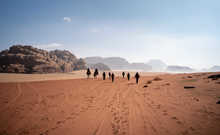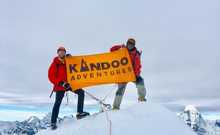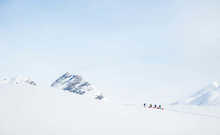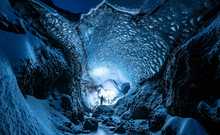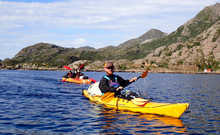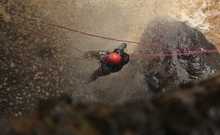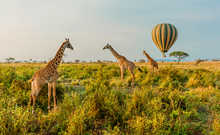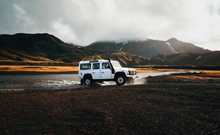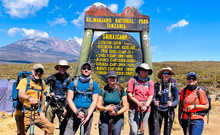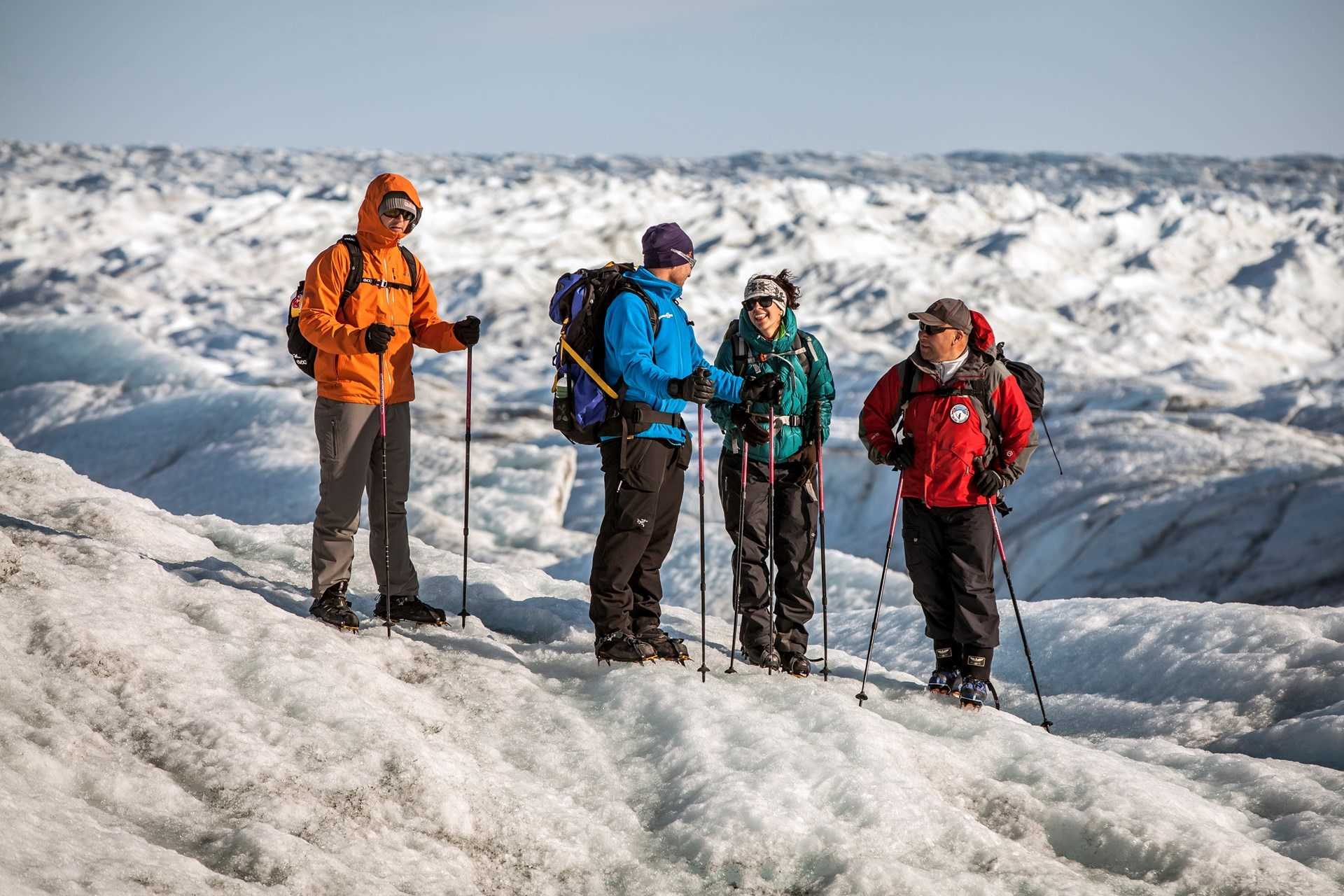Our equipment recommendations for trips in Greenland
Basic Equipment

Waterproof duffle bag:
To carry your main gear we recommend using a 110-120L duffle bag.

Daypack:
You will need to carry your own daypack on the treks. 30-40L is sufficient. We recommend Osprey daypacks.

Water bottles:
Capacity to carry at least 2 litres of water. Wide-mouthed Nalgene bottles are recommended.
Head

Sun hat:
Something that will withstand a bit of breeze whilst kayaking. You don't want to lose it in the freezing Artic ocean.

Warm beanie style hat:
Go for a version of beanie that is either knitted or fleeced for extra warmth.

Neck gaiter or balaclava:
We recommend bringing a neck gaiter or bandana for warmth. The most versatile options are made by Buff or Hoo-Rag Headwear.

Sunglasses:
Choose a pair of high UV protection glasses. Julbo are a great mountain sunglass brand but any brand with high UV protection will suffice.

Headlamp:
You will need a headlamp and some spare batteries (although it's nearly always light in summer). Petzl make market-leading and affordable headlamps.

Balaclava:
You may want a thick balaclava to protect again the harsh Greenland weather, preferably fleece.
Hands and Feet

Lightweight gloves:
For daily use we recommend lightweight, fleece or quick drying fabric gloves. Berghaus and The North Face make good lightweight gloves

Socks:
3-4 pairs of outer socks and 2-3 pairs of liner socks. We also recommend bringing thick thermal socks for the cold nights. Merino wool is the best material and Bridgedale or Smartwool make good trekking socks.

Trekking boots:
We recommend using a mid-weight trekking boots with good ankle support. Recommended brands include: Salomon, Scarpa, Hi-Tec and Merrell.

Gaiters:
Help keep your trousers clean in wet and muddy conditions.
Upper Body

Thermal base layer:
2 x thermal base layer, ideally made from merino wool. No cotton. Recommended brand is Icebreaker.

Long sleeved shirt:
Go for a light or medium weight, moisture wicking long sleeve shirt (x2). Icebreaker, Berghaus and Under Armour make great breathable trekking shirts.

Fleece or Soft shell jacket:
A mid-weight polartec fleece jacket is ideal. Berghaus, Helly Hansen and The North Face all make great fleeces.

Hard shell outer jacket:
A water/windproof hard shell outer jacket to protect you from the elements. Goretex material is best. Recommended brands include The North Face, Arc'teryx, Berghaus and Mountain Hardwear

Insulated jacket:
A good quality and warm down or primaloft jacket is required. Recommended brands include The North Face, Rab, Arc'Teryx and Mountain Hardwear

Swimming costume or shorts
This will be necessary if you want to go for a freezing dip!
Legs

Base layer:
'Lightweight' or 'silk weight' base layer for your legs. Merino wool is preferable. Recommended brand is Icebreaker

Trekking trousers:
Medium weight trekking trousers. Recommended brands include Craghoppers and Columbia

Hard shell trousers:
To protect yourself from the elements you need a good pair of waterproof / windproof hard shell trousers. Ideally Goretex. Patagonia, The North Face and Arc'teryx make good outer trousers
Odds and Sods

Toothbrush and toothpaste:
Ideally travel size

Wet wipes and hand sanitizer:
Staying clean in the wilderness can be challenging. Wet wipes and hand sanitizer are a huge help.

Personal medicines and medical kit:
We recommend bringing Paracetamol at a minimum.

Pee bottle (optional):
Useful for late night toilet needs when it is freezing outside.

Ear plugs:
For light sleepers. Snoring can be pretty bad in camp.

Personal snacks:
Boiled sweets, nuts, energy bars and dried fruit are all a good shout. All snacks must be left in the food tent, not in your personal belongings.

Dry bag:
You will be provided with 2 large dry bags to put your kit in before kayaking. Smaller drybags will also help to keep your kit dry.

Camera and spare batteries:
Unless you are a keen photographer we recommend taking a good quality and lightweight point and shoot camera like the Panasonic Lumix.

Plug adapter:
A plug adapter for charging your devices in the hotels before and after the trip. See Greenland Travel Guide for information on which plug to get.
